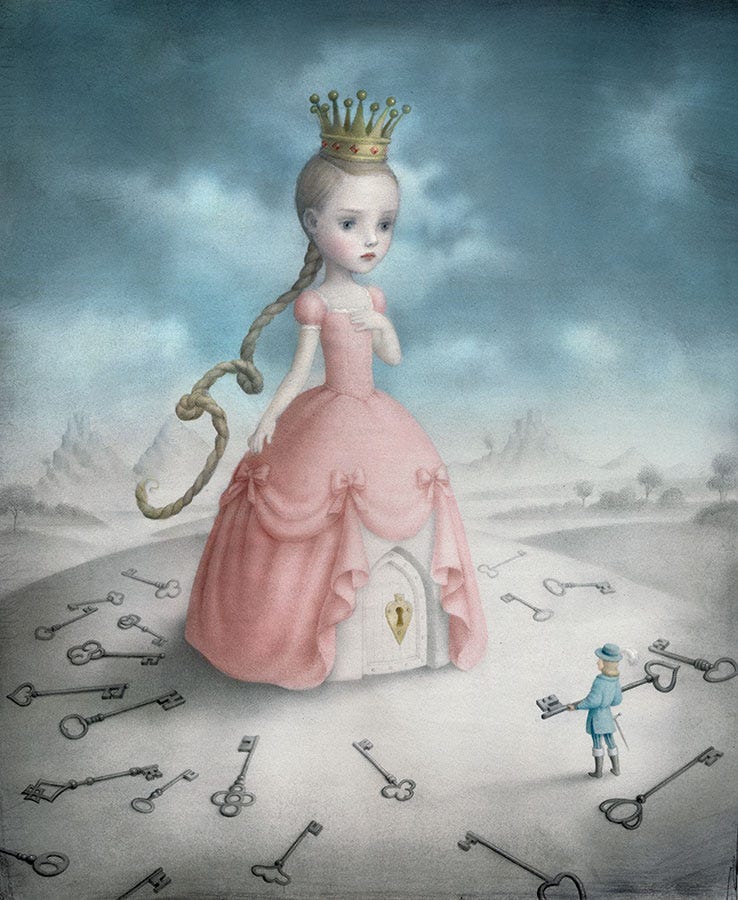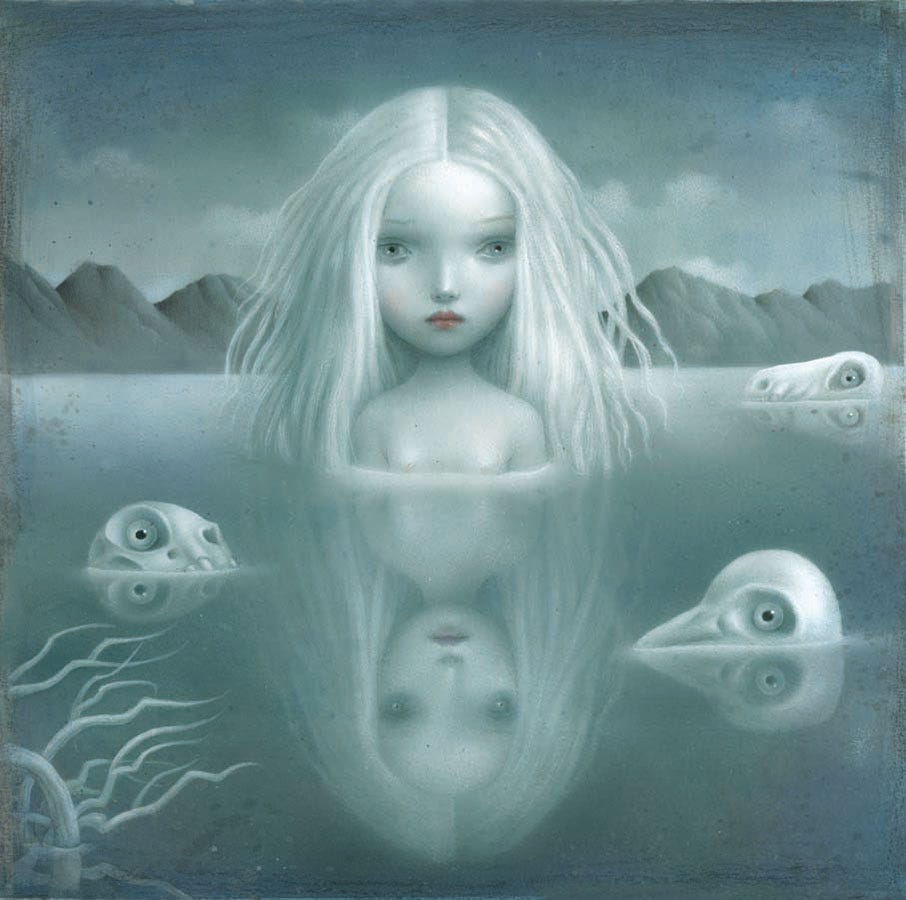Welcome to Cinncerely: Postcards From the Void.
My goal for this newsletter is to post one essay every Tuesday, starting October 1st through December 31st. Fourteen altogether. After that, we’ll have to see. I’d aim for something more ambitious but I have to keep my goals small or else the overwhelm will paralyze me into accomplishing nothing. I also have to get ahead of disappointing myself by writing as much as I can in advance and queueing it before my brain decides this isn’t fun anymore and I start to lose momentum. The topics of the posts I plan to share next month include:
the secret loneliness of birthdays
the dying art of finding community
my fifteen year streak in keeping a diary (the only consistency i’ve ever known)
what i imagine an alternate life for my grandmother might’ve been if she’d had more books
i still need to think of a fifth thing…actually, i might do a two part diary post? where the second one includes actual quotes from my old blog and insights on the trajectory of my life. might be cute! TBD.
One thing that’s fun for me is creating collages to go with every post. The official title of this newsletter is “Cinncerely,” which is a play on “Cinniie,” a nickname I gave myself back in the Myspace era as an ode to my love of cinnamon. Hence, ‘Lana C. Marilyn.’ Cinncerely is fitting because I want these posts to feel like letters, and doubly because I’ve monetized my hobby of making greeting cards—so it’s a cheesy play on a classic valediction (I love a pun).
The subtitle of this series is “Postcards from the Void,” a title I’ve been hoarding for over a decade to use for an issue of a zine that may never be done. I think it sets the expectation that tonally my content’ll be a little melancholy, a little existential, a little silly. As a nod to this, the featured collage of every post will be designed as a postcard, with a handwritten note on the back to match.
In a previous post, I mentioned drafting a manuscript of poetry. The working title of this project is Holes in the Water, best described as a collection of speculative horror poems about “haunted girls.” Each girl (also known as a Hauntling—a nickname I coined myself) is a representative of a different shade of heartache. There are five in total. In much of my writing, I describe womanhood as inherently haunted, which is to say I think there is always some lingering burden or baggage as a condition of this state of being. It isn’t necessarily heavy or debilitating or even permanent—it just always is, and that’s the thing I’m speaking to. Often, this quote by Shailja Patel comes to mind: “Our bodies are our first homes. If we are not safe in our bodies, we are always homeless.” Etymologically, the word “haunt” means ‘to visit home frequently.’ I visit my body frequently: I scrutinize her, I decorate her, I try my best to soothe the little wounds tucked within her. I haunt my body.
I am not the only thing that does.
The handwritten notes on the back of my postcards will be written in the voices of The Hauntlings. I felt it was important not only to introduce these archetypes but to give some context for the posts to come. And this should go without saying, but this newsletter is not about doom and gloom! I hold so much reverence for womanhood—I love being a girl! It’s so central to who I am and how I understand myself. I just think it’s fun to be a little gothic about it, you know? So here we are.
Anyway, let’s bring out The Hauntlings!!! 🥳
The Ghost
The Ghost is incapable of living in the moment because she’s always stuck in the past. She’s always reminiscing, or holding a grudge, or trying to get things back to the way they used to be, the way they could’ve been. She’s hooked on nostalgia. She’d be happy if she’d just…let go…but either she doesn’t know how or she refuses to try.
Mothers are often ghosts.
The Doll
The Doll is denied agency because she is beholden to a fantasy that is not her own. She tells you whatever you want to hear. Of course she’s beautiful, she’s never allowed to be not beautiful, she only exists when you look at her. Her happiness is not a priority. She’s more of a blank canvas than a girl. If she loses her beauty, she will cease to be.
Child stars are often dolls.
The Tether
The Tether is chained to other people’s expectations. She must put their needs before her own or risk severe punishment. The punishment is typically self inflicted, but sometimes it is not. The people asking so much of her are people she loves, people she wouldn’t want to disappoint, people who will wither without her. If she doesn’t help them, no one will help them. No one will help her, either—now or ever. She has to do it and she always does it. She’s very, very tired. Technically, The Tether could walk away at moment—she is not a prisoner. It’s just that her chains are made of guilt.
Daughters are often tethers.
The Waif
The Waif is a wanderer, native of nowhere. So often in search of a place to call hers. But misfortunate has a habit of following her around. Sometimes, she manages to settle down in pretty places where the air is warm and the neighbors smile, only to discover that she can’t relax, can’t enjoy it. She doesn’t feel welcome. She doesn’t feel safe. So, as always, she resigns herself to packing up and starting over. For her, starts are never fresh yet she keeps making the mistake of having hope. Longing is the only thing that feels familiar.
Survivors are often waifs.
The Mirage
The Mirage is three or four degrees of separation away from you. When her name floats into conversations, there’s always a touch of awe to it, sometimes twinged with envy though they’ll always deny it. You’ve met her once or twice, felt relieved she was real. And she lives up to the hype: The Mirage is happy. Or so she says. And why wouldn’t she be? Her clothes are so beautiful (how did she get them?). Her life is a movie (don’t look behind the scenes). She’ll always make it look easy, always say it was worth it. The Mirage is a liar, but she’s telling the truth as far as she knows it. Indivisible and intertwined, the difference between her pleasure and pain is too minuscule to matter. She leans in to tell you a secret but you can’t make out the words. When she smiles, you realize she has no teeth.
The girls on the screen are often mirages.
suggested reading
You may enjoy, as I did, these essays:
Sarah Cucchiara’s post on Dead Girls “haunting the narrative” (Laura Palmer from Twin Peaks, for example, is the epitome of A Mirage)
And, if you’re curious to read any of my poetry:
the archive is holy (scroll to batch 042)
Also, it’s worth mentioning that these five archetypes aren’t the end of the conversation. There are so many other ways to be haunted, but these are the ones centered most often in my writing. Haunted girls are our friends and enemies, occupying trains and public spaces with us and swarming all over the media and tabloids. Tell me the names of your favorites, both fictional and real. Which Hauntling resonates most with you?











Creative.
Incisive bordering on genius.
Thank you for sharing.
Subscribed.
🙏🏾